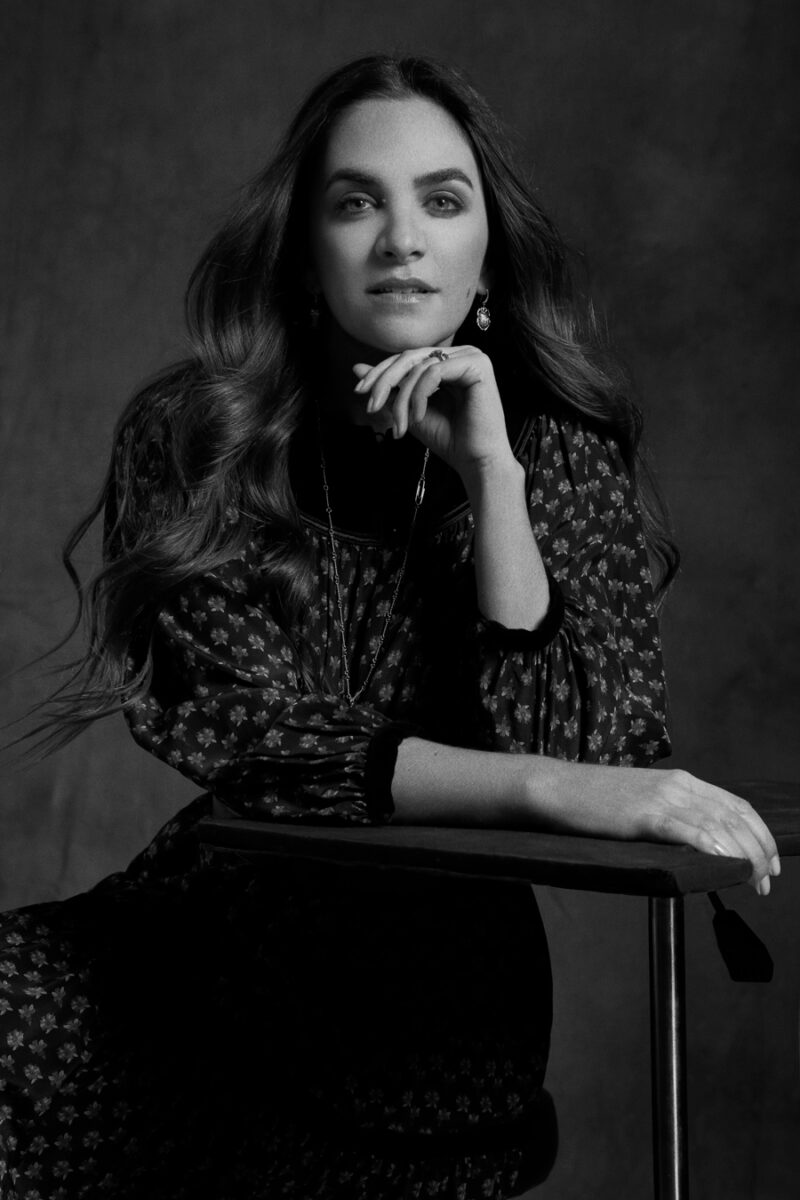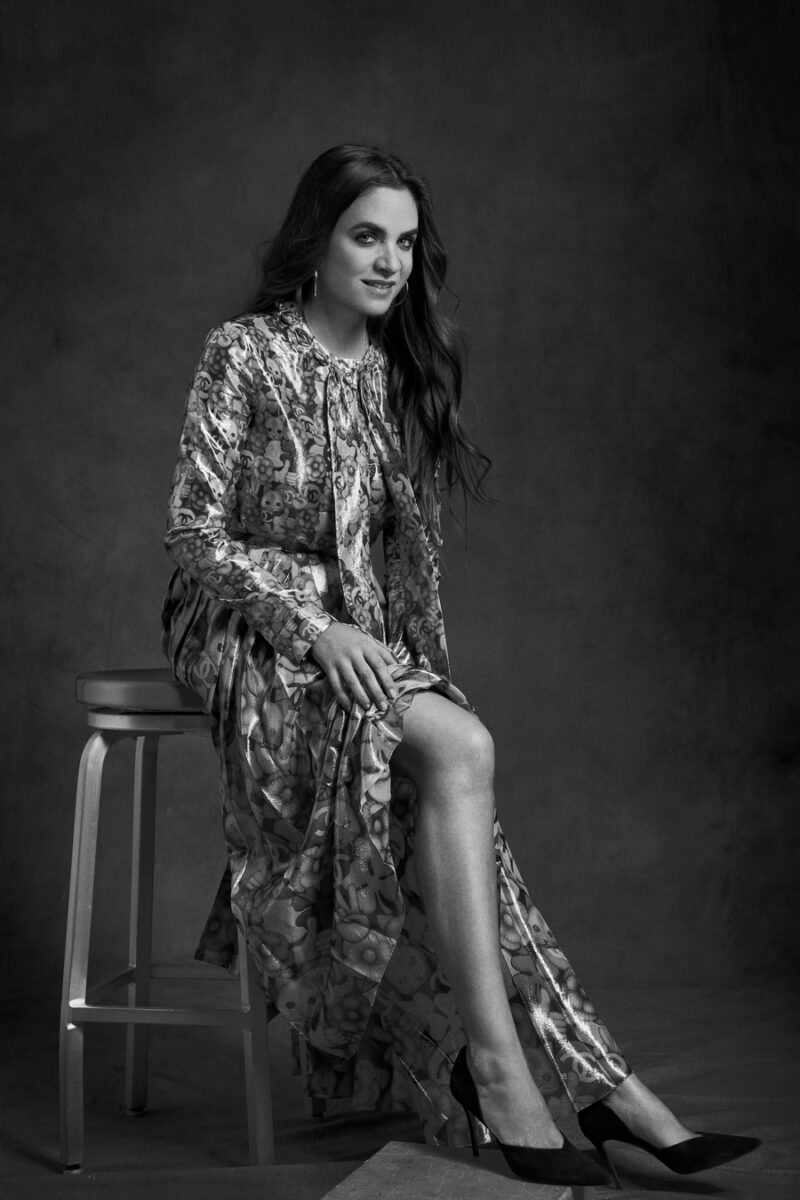JACOB SUDHOFF AND JERRY HOOKER
Giorgetti Houston was merely a dream project when Jacob Sudhoff & Jerry Hooker first conceived the idea. Inspired by an heirloom-quality chair that the couple had purchased, Sudhoff, CEO and founder of Sudhoff Companies, and Hooker, principal at Mirador Group, imagined something far grander than the lackluster “luxury” condo developments that were sprouting up throughout the Houston market. The marriage of aspirational living with one of the world’s finest Italian cabinet and furniture makers was the couple’s muse when envisioning Houston’s first luxury-branded residential building. To be fitted with cabinetry and closets designed and manufactured by Giorgetti was simply not enough, as the couple visualized an all-encompassing lifestyle for the future residents of the building. High-end furnishings, paneling, lighting, carpeting and accessories curated by the couple and crafted by Giorgetti, will fill in the brushstrokes of the brand’s identity. Even the most seemingly-minor details, such as how the bricks are laid or the color palettes that will transform the spaces, are inspired by individual furniture pieces created by the Italian label. Certain to be one of the most-sought after residences, Giorgetti Houston will boast seven stories and 32 handsomely bespoke homes that will be timeless works of art at the interstice of luxury living.
Here IRIS Covet Book shares a conversation with the real estate and design moguls behind this ambitious and exciting project.

DM: Where are you from originally and how did you both come to call Houston home?
JERRY: I grew up on a farm in Tennessee in the middle of nowhere and waited my whole childhood to get out of rural west Tennessee. After graduating high school, I went to LSU (Louisiana State University) because it was the top-ranked program, which later led me to New York for three years. My older sister and her husband lived in Houston, so I always wanted to call Houston home to be close to family. I just needed my career to catch up to where I wanted to be, before I ultimately moved back here.
JACOB: I grew up in Corpus Christi and moved here in 2010. I’m from south-Texas, born and raised. I always wanted to move to the city, so I looked at New York, Miami, Atlanta, Dallas, and Houston, and I decided on Houston. To break into a new city, I felt Houston was the most accommodating and had the best opportunities. I found that Houston was a welcoming city and I think everybody here will always give you one opportunity to prove yourself. So that was a refreshing aspect about working and starting a career here.
DM: Did you two meet here in Houston, and how long have you both been married?
JACOB: We’ve been together as long as we’ve been in Houston, so a little over six years and married for two years just this past Valentine’s Day.
JERRY: When I was living in New York, one of my closest friends there was from Houston, and he knew Jacob from the past. I had come home to surprise my sister for Christmas that year, and went out with friends for drinks the evening of Christmas Day. That evening, a friend of mine told me, “There’s this new guy in town, and I want you to meet him.” But that was prefaced with, “But he’s dating one of my friends, so stay away.” But that just sounded like a challenge that I could conquer. Ever since then we’ve been together [laughter].
DM: How long have you been working in your respective fields, and what gave you the desire to get into those fields?
JACOB: I’ve been in real estate for 20 years. When I was a kid, I used to enjoy riding my bike around the neighborhood and going through all the open houses. I have a photographic memory, so I used to memorize all the statistics and floor plans of the houses I’d walk through. My grandfather was a realtor and he naturally had an influence on me. At the age of 16, I started working for a broker out of Dallas named, Marilyn Hoffman. When I was a teenager, I used to ride horses. I was at an Arabian horse show in Fort Worth, and ran into her booth where she was selling multi-million-dollar mansions and horse farms. When I was 18 and after I got my real estate license, I worked for two years as her assistant. When I flew up to Dallas for the first time, she picked me up in a Rolls Royce, and we went shopping. I lived in a lower-middle-class family, and being introduced to her lifestyle was like seeing Lifestyles of the Rich and Famous in real life. In fact, she was on that show many times with all her listings, so it was a culture shock for me. While I worked for her, I went on to open an office in Corpus Christi for her.
JERRY: I went to school for urban design, architecture, landscape, and have been in it ever since. I’ve been in this field for about 10 years now. Originally, I was following in my sister’s footsteps because she and her husband were the only financially-successful people in my family. I thought I was going to be a golf course architect, but I soon figured out in the first year of school that that was not my calling in life. From my experience in New York, I discovered a niche by combining my interests in architecture, landscape architecture, and interiors. Naturally, just loving the process of home construction is why now we’re involved in all three disciplines meshed together.

DM: Do you have any professional mentors or someone who’s inspired you in your career and encouraged you to go after your goals?
JERRY: For me a great mentor is someone who has a combination of career success balanced by successes in their personal relationships. My sister has been that consistent person in life and business that I admire. With her relationship, with her family, and also with her business because she is able to balance them all. I always wanted to emulate that.
JACOB: I would say my most recent mentor is my business partner, George Lee, whom I met when I came to Houston. He is a good man that has stepped in and acted like a mentor to both Jerry and myself.
JERRY: He’s kind of like a father figure to us now. From a business perspective, he has taught us so much. I don’t think our companies would be as successful without his advice and influence.
DM: Were there any challenges that you’ve had to overcome in order to reach the level of success that you’re currently experiencing?
JERRY: We both have had normal business growth spurts and growing pains, but luckily, we listened to people like George, and learned through other people’s hard times in order to better manage our own.
JACOB: In Corpus, I struggled more than I have in Houston. I didn’t have a mentor there, so it was more difficult. Coming here and having a mentor has really helped whenever there have been issues. George has been what’s gotten me through those challenges properly.
JERRY: We’ve had struggles that we thought were the end of the world, but I still feel like in hindsight and compared to plenty of other people we know, we were fortunate enough to make it through them.
DM: Do you have any daily practices or habits that help you as an entrepreneur?
JACOB: I think routine is very important. We are very strict to a routine. We’re in bed by 9 o’clock almost every night, and I’m up at 4. We prefer to have our days very structured. We live by appointments during the day. Weekends—we still work, but it’s more on the passion side. We enjoy looking at houses and touring properties or looking at land. I think it’s something that has helped us because we love what we do.
JERRY: Because we’re passionate about what we do, a large portion of it feels as enjoyable as a hobby and not so much like work. Even when we travel, we like to look at houses and get ideas so we can be inspired for the next project in Houston.

DM: Thought and visualization are very powerful tools in achieving success in manifesting different desires that you might have in life. Have you ever utilized these practices, and if so, could you share a specific experience?
JACOB: On our honeymoon, we went to Borobudur, one of the largest Buddhist temples. While we were there, we chanted with the monks. After that experience, I started to get into meditation. It’s not something I do every day, but it’s something I do often. Years ago I signed up for a service on tut.com. After signing up for it and taking the initial survey, the service sends you a message from “the Universe” daily. The main message of the Universe is to just relax and visualize where you want to be. I receive those messages Monday through Friday, it’s nice way to remind myself to visualize where you want to be, whether that’s tomorrow or 10 years from now. In my opinion, visualization is a key to success.
JERRY: I like the perspective of retrospect—thinking about where you came from and trying to check in with yourself to maintain humility. I always try to bear in mind where I came from and the experiences that I’ve had because everything started with that foundation, and my future is built upon that.
DM: There’s a good balance between you two. What are some unique features or services that your companies provide to the Houston market that makes you stand out amongst your competitors?
JERRY: It’s really the integration of our companies that allows us to stand out. Everything that we can offer our clients is because of the dynamic that we bring together, from the sales and marketing to putting the structure of the deal together. It’s a truly comprehensive approach to real estate developments, regardless if it’s a high-rise condo or a single-family house. Most of the time, creatives are horrible business people, but my hat is split between finance and actual design. I care equally about both of them. My team counterbalances me since they are all about the design. That definitely goes into Jacob’s deal-making process to make sure the numbers work up front to ultimately hire our own companies to do the sales, marketing, and design. It’s a wonderful collaboration!
JACOB: And I believe we do more. I still own and manage the brokerage firm, but the main hat I wear right now is more of a developer’s partner. I help structure the deal, help raise the equity, and help manage the concept and the programming of the projects. And at the end of the day, it’s about the bottom line and profitability, but also the philosophy of sales and how the projects will absorb into the marketplace upon completion. We’re not just a private equity firm or just an architecture firm, we also own a land-planning firm. So it’s really the integration of all these together which allows us to play a large part with each one of our clients.
DM: What projects are you currently working on together, and is it enjoyable for you to collaborate with one another? I imagine you must continuously feed off each other’s energy.
JACOB: What we like is we’re able to change Houston’s landscape. So we’re bringing more architecturally significant projects to Houston. I think that that’s something that’s really exciting for us. So the first branded building that we’re doing right now is Giorgetti Houston, and that’s only the first—we’re working on several more branded buildings. I’m excited to bring and to have Houston be an incubator of unique and forward-thinking projects. There’s dozens of projects we’re currently working on and dozens more in the pipeline!
JERRY: For the Giorgetti project, we knew the piece of property, and we knew it needed to be a condo building. But at the same time, it needed to be something special, so we started thinking about brands to collaborate with. We had purchased a piece of Giorgetti furniture a long time ago, and the more we learned about its construction, along with the family heritage and philosophies that they’ve had for over 100 years, the more interested we became in collaborating with them. We jumped the gun and went ahead and did some preliminary designs for a building. We coordinated a meeting with the company to share our idea. The CEO of the company even came from Italy to meet with us. Maybe he thought we were crazy, but we were able to prove ourselves because we had studied the brand, its philosophies, and how to make an environment truly Giorgetti. It’s not just the kitchen cabinets. It’s not just the closets, but it’s the furniture, the lighting, the rugs, and the accessories. It’s how all these details translate into the Houston market.
JACOB: We went to Italy and took it a step further. After they came and agreed to further this conversation, we went to Italy to visit their factory. There we saw in depth all the details of how things are constructed and learned even more about their philosophy. Everything within our building—from how we’re laying the brick, to the façade of the building itself, to all the materials and color palettes is all inspired by different pieces of Giorgetti furniture.
JERRY: It made a lot of sense to us to try to partner with them and luckily, we were fortunate enough that they agreed. It’s actually been a pretty beautiful process so far.

DM: Is this the first branded residential project of its kind in Houston?
JERRY: In essence, this is the first branded building of this kind in Texas, and Giorgetti is sold in 67 countries across the world. They’re actually better known in London or Paris or New York or Singapore. But they allowed us to do it first in Houston, so we’re very proud to be collaborating on this together.
JACOB: It was a perfect storm of us really wanting it, and being such a big part of the development process, that we were able to push something like this forward. Giorgetti had attempted another project that did not go through. I think it’s a big compliment from them that they wanted to be a part of our project.
DM: And how has the response been from the consumer?
JACOB: Houstonians were not informed about the Giorgetti brand. But as people got to know the brand and they understood, they developed a respect for it. Now it has really taken off.
JERRY: Sales are going well, and we’ve basically eliminated any question of the project not happening anymore.
JACOB: The quality of buyers in the project are fantastic. These are people who are art lovers and who understand quality and craftsmanship. So each piece of Giorgetti furniture is designed by an architect and for us each home is sort of it’s own piece. I actually think it’s going to be one of the few condominium projects that will be sought after once it’s built. Once they can walk in and experience what a Giorgetti home will be like, then they’ll really want it and strive for it. Giorgetti will only allow us to do this one building in Houston, so the next one will be in another city.

DM: And what’s the timeline for completion on the project?
JERRY: Assuming sales keep going as they are, we will probably start construction at the end of this year and take about 16 to 18 months to complete. So we’re looking at completion in 2019.
DM: How do you see yourself and companies evolving in the future?
JERRY: Probably just a continuation of what we’ve seen so far. I mean, our companies are very different now than what they were six years ago, and both of our companies have quadrupled their size since then. But it’s really more of an integrated approach moving forward, being more involved with one another, both offices and projects themselves. We like having a seat at the table both financially and professionally, so it will just be a continuation of that, I think.
JACOB: We’ve made a conscious effort to go deeper with our business rather than going wider and spreading ourselves too thin. That means taking a deeper relationship with each project and wearing multiple hats in each project to have more impact. And we feel that that leads to greater chances of success.
DM: What has been your favorite project to work on besides Giorgetti, either together or individually?
JERRY: Before we were together, when I was living in New York, I spent most of my time working on the 9/11 Memorial. The firm I worked for at the time had the entire Route 9A corridor, which is the West Side Highway. We were doing the World Financial Center, 1 World Trade, and all the frontages between the buildings. At the time, that was empowering. I was just a junior designer at the time, but it was something I looked forward to every day and learned a tremendous amount from. Aside from the Giorgetti project, our first showcase home that we designed and built together is a favorite because it has led to so many other amazing projects.
JACOB: When I first got to Houston, the market was not very good. George had invested in a lot of different projects that were all in peril. I went to the different banks and negotiated the debt and purchased out all the debt at discounts. I was able to save a significant amount of capital for George and prove that I was able to achieve the results. I demonstrated that I was capable of doing more than just being a traditional realtor. And that led into having us invest and start being the private equity for all these different builders and developers. Giorgetti has been a special project because there’s been—it’s had a lot more of an emotional connection—it’s been the best collaboration between us.
DM: You both have experienced so much growth through your collaboration with one another. I’m curious when do you feel most confident?
JACOB: Together.
JERRY: I couldn’t agree more. We do well in situations like this because we absolutely counterbalance each other.
JACOB: I think that our relationship has grown stronger over the years and will continue to grow both professionally and personally.
 Photography and Interview by Dustin Mansyur|For more information visit giorgettihouston.com| miradorgroup.com | sudhoffco.com
Photography and Interview by Dustin Mansyur|For more information visit giorgettihouston.com| miradorgroup.com | sudhoffco.com

 From Left To Right: Hua @ Wilhelmina Models Instagram @huaever | Meghan Collison @ New York Models, Instagram @omgitsmeg | Alima @ Supreme Instagram @alimalaf | All Clothing by Roberto Cavalli
From Left To Right: Hua @ Wilhelmina Models Instagram @huaever | Meghan Collison @ New York Models, Instagram @omgitsmeg | Alima @ Supreme Instagram @alimalaf | All Clothing by Roberto Cavalli From Left to Right: Antonino Russo @ Request Models Instagram @antonino_russo | Sweater, Jacket, Pants, and Sneakers by Versace | Saloman Diaz @ Soul Artists Management Instagram @salomon.diaz | Jacket and Pants by Versace Boots by Dior Homme | Vito Basso @ Soul Artists Management Instagram @vitobss | Sweater and pants by Versace, Vintage Boots, Stylist’s studio
From Left to Right: Antonino Russo @ Request Models Instagram @antonino_russo | Sweater, Jacket, Pants, and Sneakers by Versace | Saloman Diaz @ Soul Artists Management Instagram @salomon.diaz | Jacket and Pants by Versace Boots by Dior Homme | Vito Basso @ Soul Artists Management Instagram @vitobss | Sweater and pants by Versace, Vintage Boots, Stylist’s studio
 Jillian Mercado @ IMG Models Instagram @jilly_peppa | Bra and Choker by Zana Bayne, Vintage Jean Paul Gaultier dress from Screaming Mimi’s Vintage, Socks and boots, model’s own
Jillian Mercado @ IMG Models Instagram @jilly_peppa | Bra and Choker by Zana Bayne, Vintage Jean Paul Gaultier dress from Screaming Mimi’s Vintage, Socks and boots, model’s own Deion Smith @ IMG Models Instagram @deiondsmith | Jacket and pants by Prada Suspenders, stylist’s studio, Shoes by Roberto Cavalli
Deion Smith @ IMG Models Instagram @deiondsmith | Jacket and pants by Prada Suspenders, stylist’s studio, Shoes by Roberto Cavalli From Left to Right: Armand Puszta @ Soul Artist Management Instagram @armandpuszta | Jacket and shoes by Roberto Cavalli, Shirt and Pants by Valentino | Avie Acosta Instagram @avie.acosta | Trench Coat by Valentino, Bra by Zana Bayne, Shoes by Roberto Cavalli | Jordan Paris @ Soul Artist Management Instagram @jordanwparis | Tuxedo and Shoes by Valentino, Shirt by Levi’s
From Left to Right: Armand Puszta @ Soul Artist Management Instagram @armandpuszta | Jacket and shoes by Roberto Cavalli, Shirt and Pants by Valentino | Avie Acosta Instagram @avie.acosta | Trench Coat by Valentino, Bra by Zana Bayne, Shoes by Roberto Cavalli | Jordan Paris @ Soul Artist Management Instagram @jordanwparis | Tuxedo and Shoes by Valentino, Shirt by Levi’s Daisuke Ueda @ IMG Models Instagram @uedaisuke | Harness by Zana Bayne Shirt, pants, and shoes by Burberry
Daisuke Ueda @ IMG Models Instagram @uedaisuke | Harness by Zana Bayne Shirt, pants, and shoes by Burberry From Left to Right: Dustin Bice @ ANTI MGT Instagram @biceofficial | Kiara @ Elite Models Instagram @kikibarnez | Shirts and Pants by Hood by Air, Boots, stylist’s studio
From Left to Right: Dustin Bice @ ANTI MGT Instagram @biceofficial | Kiara @ Elite Models Instagram @kikibarnez | Shirts and Pants by Hood by Air, Boots, stylist’s studio Aqua Bell Parios @ Heroes Model Management Instagram @aqua | Vintage Levi’s Dress from Screaming Mimi’s Vintage, Sleeve by Gypsy Sport, Shoes by Versace
Aqua Bell Parios @ Heroes Model Management Instagram @aqua | Vintage Levi’s Dress from Screaming Mimi’s Vintage, Sleeve by Gypsy Sport, Shoes by Versace Diego Villarreal @ Soul Artist Management Instagram @ddiegovillarreal | All Clothing by Dior Homme
Diego Villarreal @ Soul Artist Management Instagram @ddiegovillarreal | All Clothing by Dior Homme From Left To Right: Molly Constable @Jag Models Instagram @mollyconstable | Harness by Zana Bayne, Vintage blouse from Screaming Mimi’s Vintage, Pants and boots, model’s own | Cindy Waiter Instagram @hellcat444 | Jacket by Levis Harness by Zana Bayne Dress, jewelry and boots, models own
From Left To Right: Molly Constable @Jag Models Instagram @mollyconstable | Harness by Zana Bayne, Vintage blouse from Screaming Mimi’s Vintage, Pants and boots, model’s own | Cindy Waiter Instagram @hellcat444 | Jacket by Levis Harness by Zana Bayne Dress, jewelry and boots, models own From Left To Right: Yves Matthieu @ Heroes Model Management Instagram @the_yvesdropper | Harness and pants by Preston Douglas, Shoes by Converse | Diana Veras @ Jag Models Instagram @mynamesdiana | Choker by Preston Douglas Shirt, shorts and shoes by Jil Sander
From Left To Right: Yves Matthieu @ Heroes Model Management Instagram @the_yvesdropper | Harness and pants by Preston Douglas, Shoes by Converse | Diana Veras @ Jag Models Instagram @mynamesdiana | Choker by Preston Douglas Shirt, shorts and shoes by Jil Sander
 Dress by Kelsey Randall | Trousers Alon Livne | Earrings by Alibi | Necklace by BRIWOK Jewelry
Dress by Kelsey Randall | Trousers Alon Livne | Earrings by Alibi | Necklace by BRIWOK Jewelry
 Dress by Roberto Cavalli | Hat by Purple passion DV8 | Earrings by Wendy Faye Jewelry and Molly Cutler Jewelry
Dress by Roberto Cavalli | Hat by Purple passion DV8 | Earrings by Wendy Faye Jewelry and Molly Cutler Jewelry Suit by DKNY | Beret by Hat House New York | Earrings by Akko Su and Wendy Faye Jewelry
Suit by DKNY | Beret by Hat House New York | Earrings by Akko Su and Wendy Faye Jewelry Suit by Versace | Boots by Pleaser
Suit by Versace | Boots by Pleaser Top by SONGRYOO | Pants by DKNY | Beret by Hat House New York | Earring s by Mollie Cutler Jewelry
Top by SONGRYOO | Pants by DKNY | Beret by Hat House New York | Earring s by Mollie Cutler Jewelry Leather Hat by Purple Passion DV8 | Latex Body suit by Atsuko Kudo | Safety pin earrings by Laruicci | Earring by Alibi | Necklace by BRIWOK Jewelry
Leather Hat by Purple Passion DV8 | Latex Body suit by Atsuko Kudo | Safety pin earrings by Laruicci | Earring by Alibi | Necklace by BRIWOK Jewelry Sweater by DKNY | Jumpsuit by SONGRYOO | Earring by Laruicci
Sweater by DKNY | Jumpsuit by SONGRYOO | Earring by Laruicci Trench by Michael Kors | Hat by Purple Passion DV8 | Boots by Pleaser | Rings by Alibi | Avocet Jewelry and Redwolf PDX | Necklaces by BRIWORK Jewelry | Bracelet by Avocet Jewelry | Earrings by Laruicci
Trench by Michael Kors | Hat by Purple Passion DV8 | Boots by Pleaser | Rings by Alibi | Avocet Jewelry and Redwolf PDX | Necklaces by BRIWORK Jewelry | Bracelet by Avocet Jewelry | Earrings by Laruicci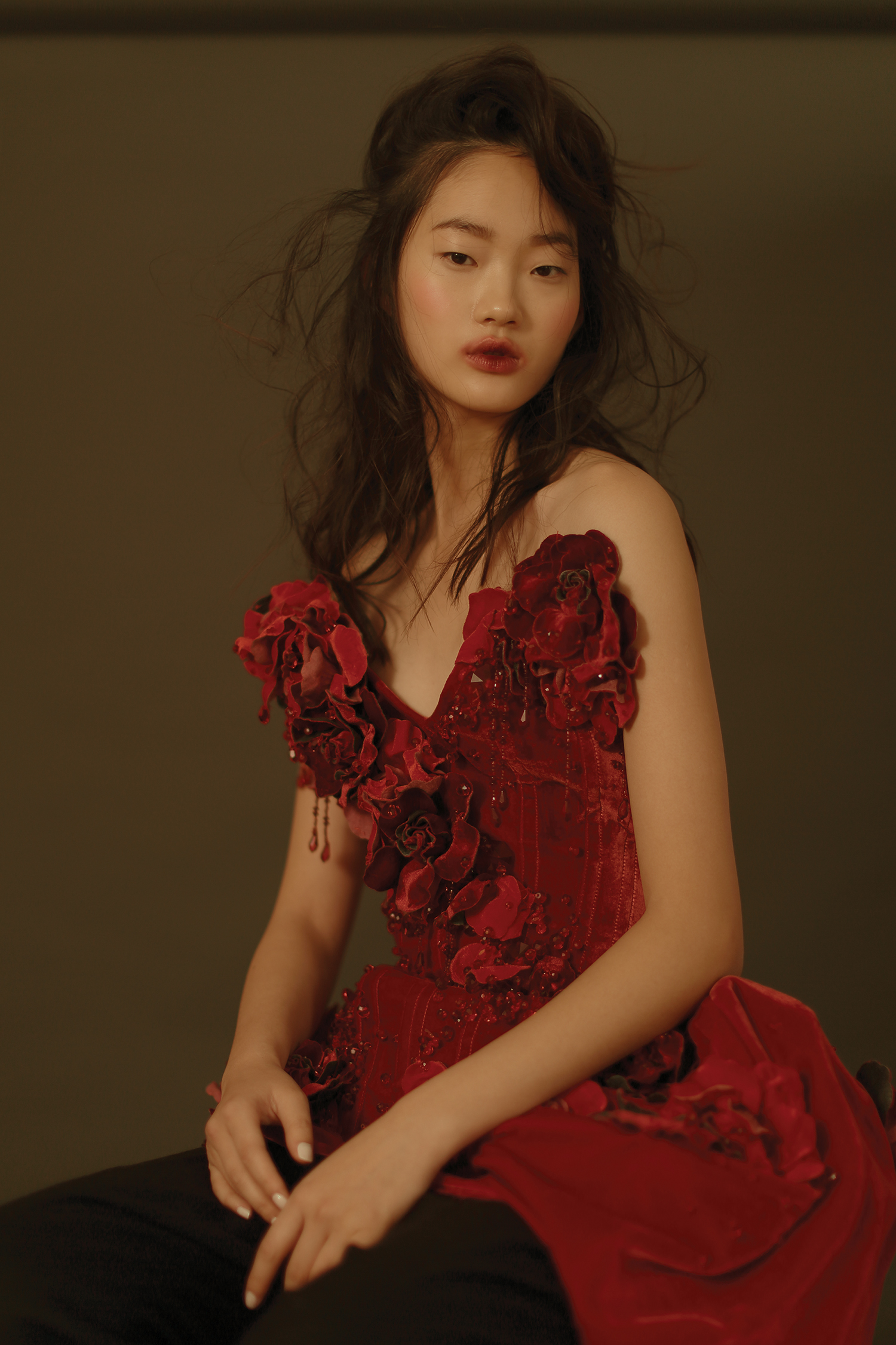 Dress by The Blonds
Dress by The Blonds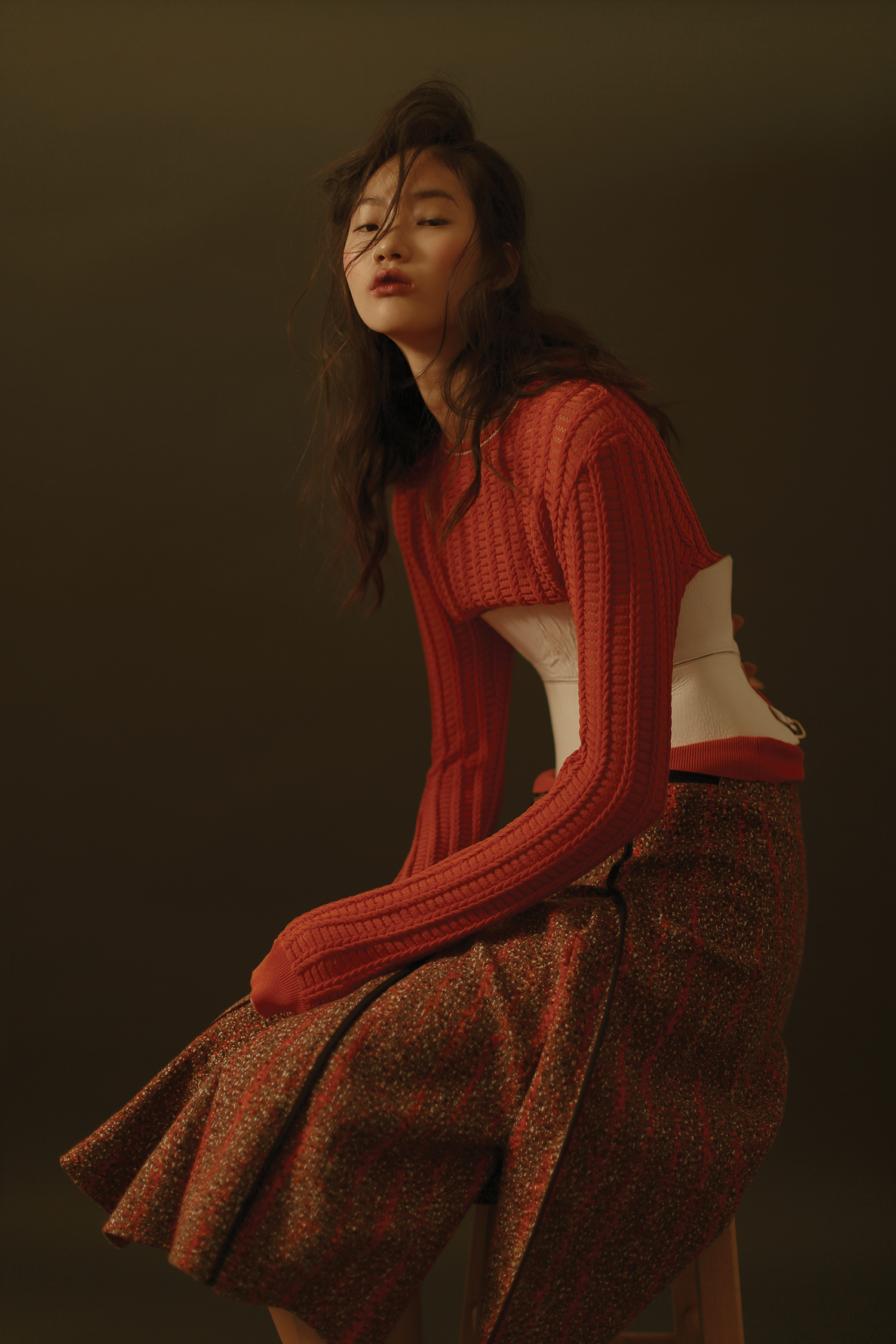 Sweater & Skirt by Carven | Leather corset by Zana Bayne
Sweater & Skirt by Carven | Leather corset by Zana Bayne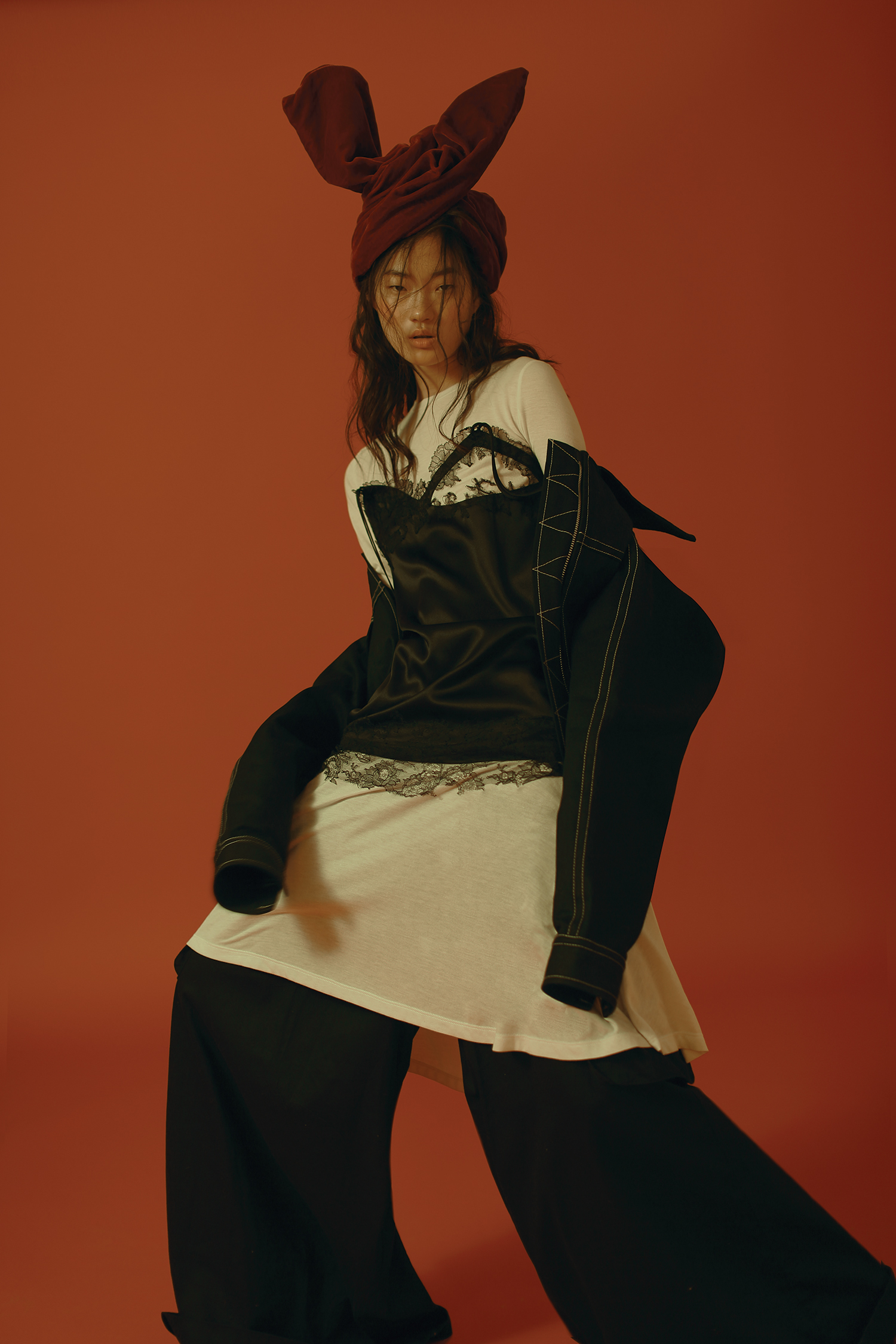
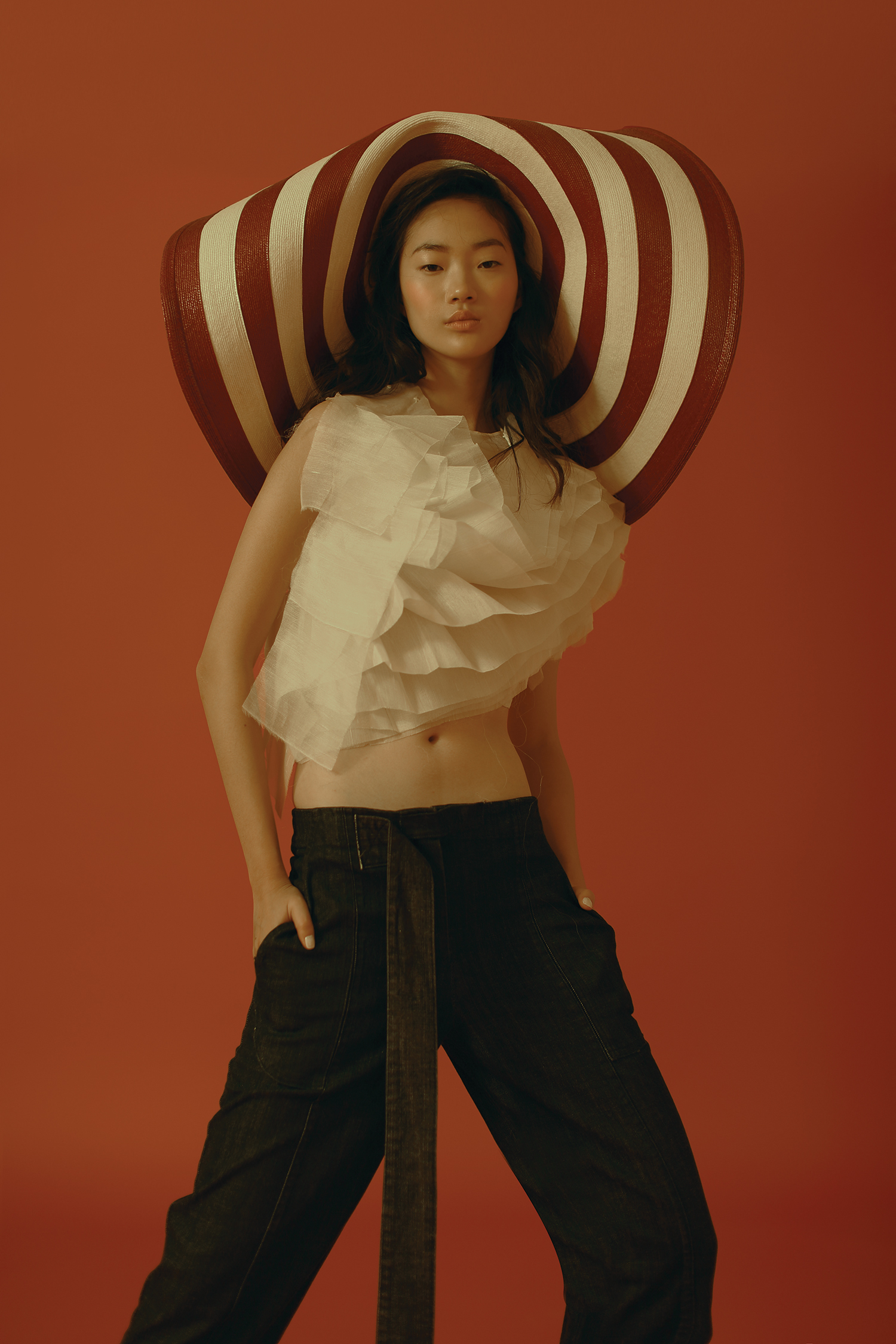 Top by Patricia Padrón | Pants by Wesley Berryman | Hat by Anya Caliendo
Top by Patricia Padrón | Pants by Wesley Berryman | Hat by Anya Caliendo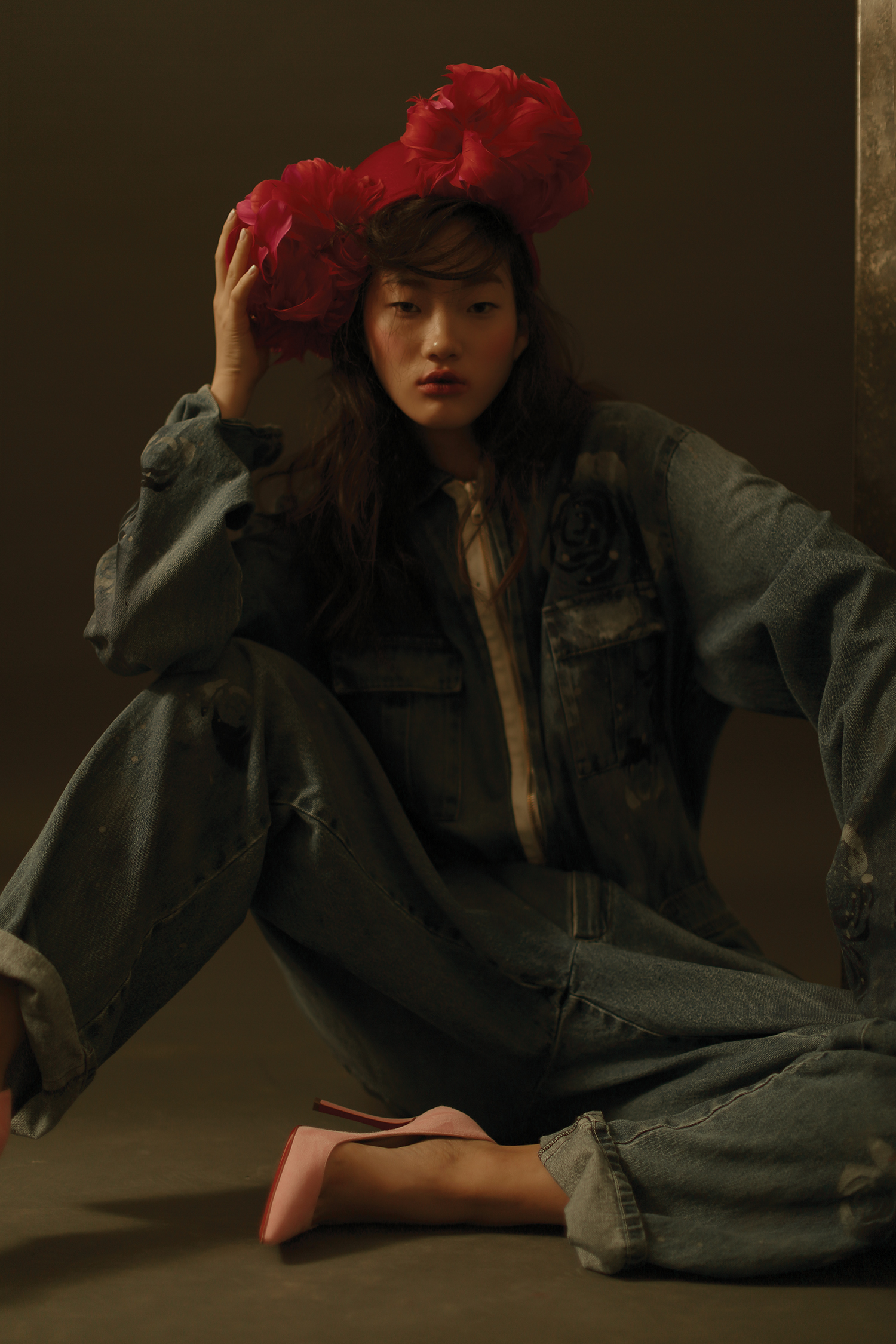 Jumpsuit by Marna Ro | Hat by Anya Caliendo | Shoes by Christian Louboutin
Jumpsuit by Marna Ro | Hat by Anya Caliendo | Shoes by Christian Louboutin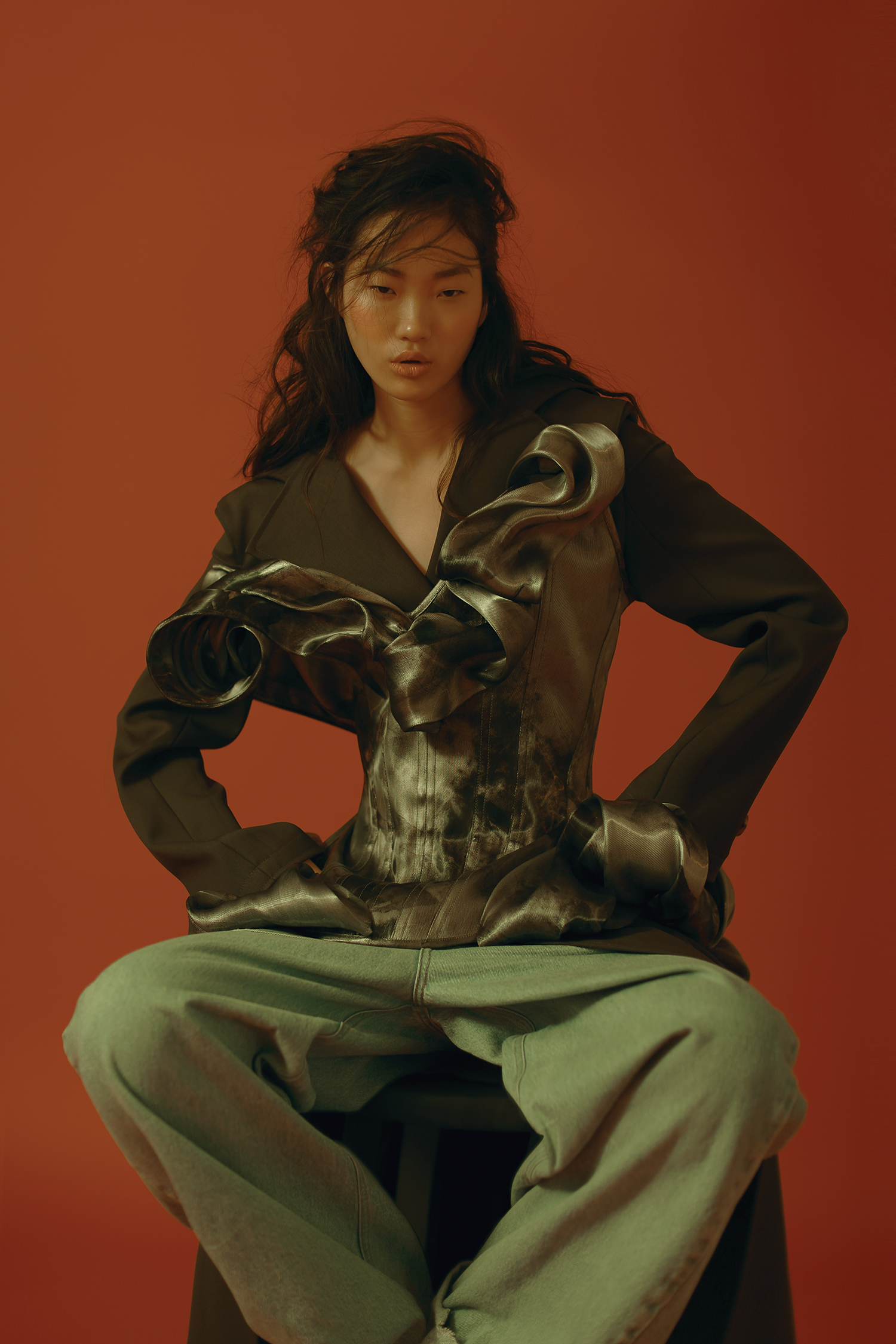 Corset by The Blonds | Coat by HOMIC | Trousers by Ex In nitas | Shoes by Jil Sander
Corset by The Blonds | Coat by HOMIC | Trousers by Ex In nitas | Shoes by Jil Sander Shirt by HOMIC | Sequin shorts & sleeves by Queenie Cao
Shirt by HOMIC | Sequin shorts & sleeves by Queenie Cao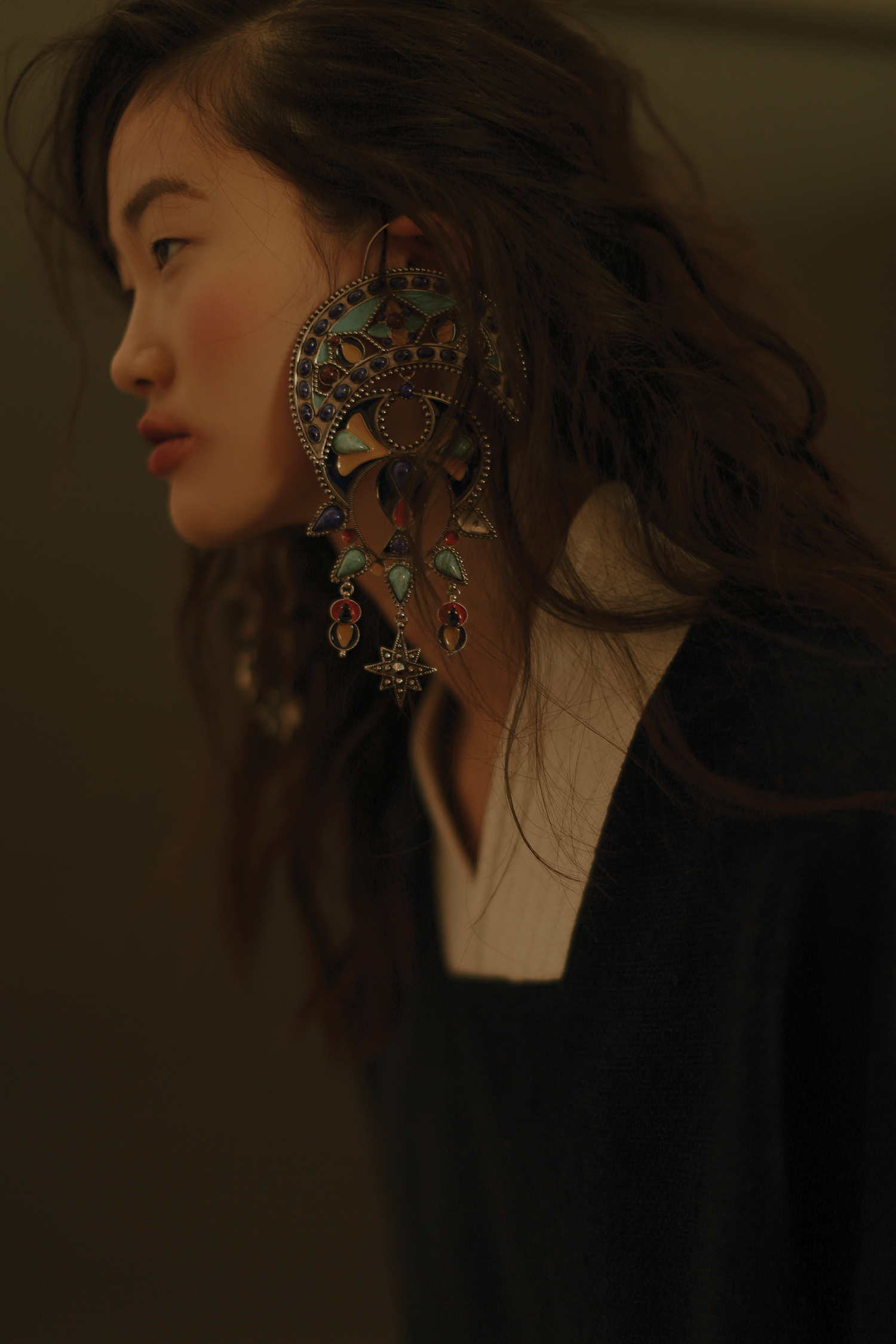 Top by PAMPLEMOUSSE | Earrings by Roberto Cavalli
Top by PAMPLEMOUSSE | Earrings by Roberto Cavalli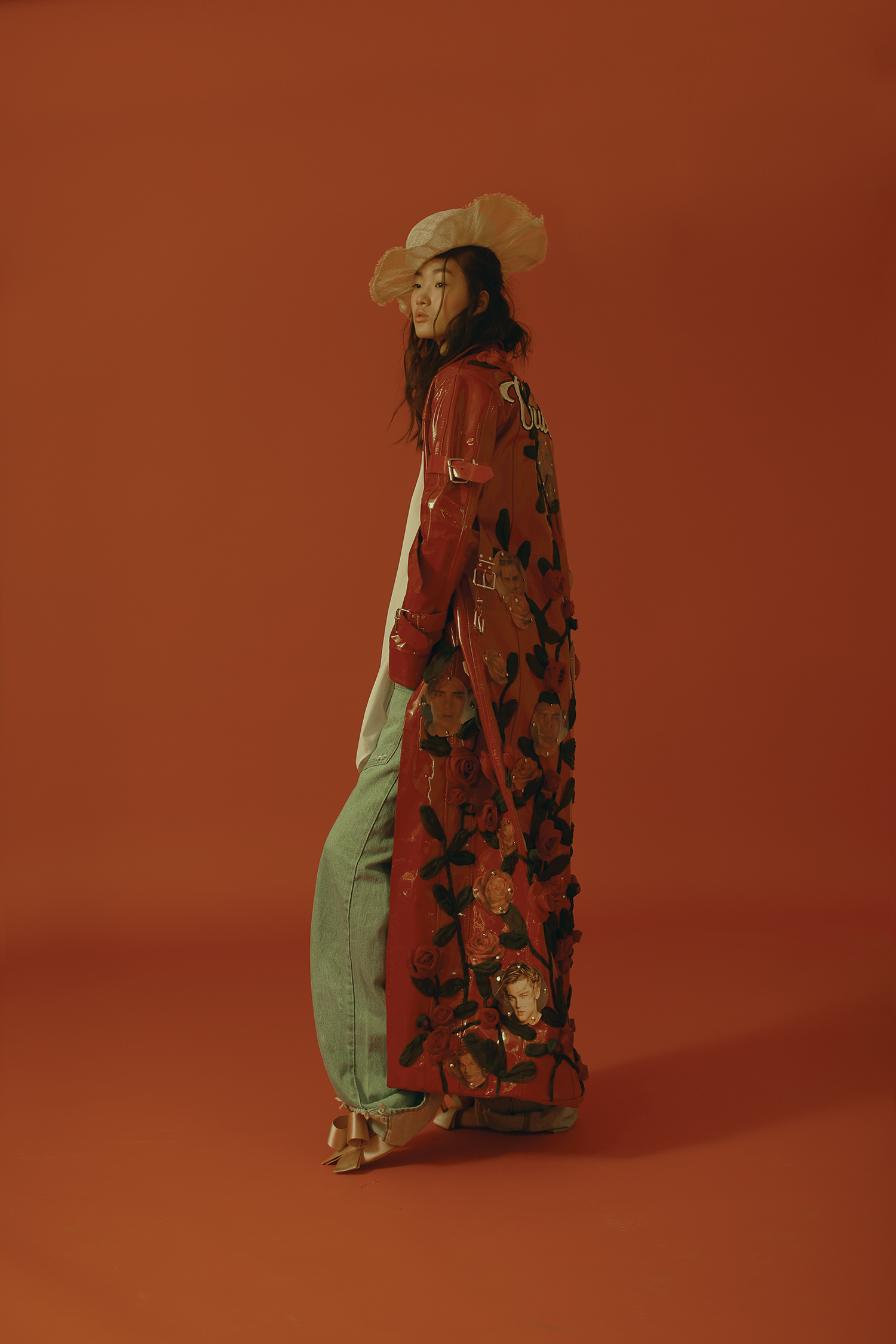 Trench by NAMILIA | Shirt by Jil Sander | Hat by PAMPLEMOUSSE
Trench by NAMILIA | Shirt by Jil Sander | Hat by PAMPLEMOUSSE Bodysuit by Alix, Earrings by Rachel Comey
Bodysuit by Alix, Earrings by Rachel Comey Swimsuit by ALIX
Swimsuit by ALIX  Dress by Bally
Dress by Bally Dress by Prabal Grung Earrings by Luz Ortiz
Dress by Prabal Grung Earrings by Luz Ortiz Bodysuit by Lisba
Bodysuit by Lisba Dress by Prabal Grung
Dress by Prabal Grung